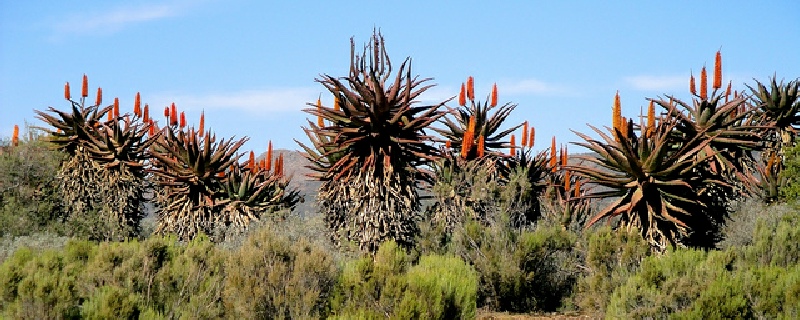
Fostering Aloe In Their Natural Habitat
Aloe Council of South Africa




Aloe - Derived from the Greek word for the dried juice of the aloe leaves. Ferox - “fierce” or “war- like” referring to the very notable spiny edged leaves.
Aloe ferox also known as Cape Aloe, Bitter Aloe, Red Aloe, Tap Aloe (English); Bergaalwayn, Bitteraalwyn (Afrikaans), iKhala (Xhosa), Inhlaba (Zulu) is a species of aloe indigenous to South Africa’s Western Cape, Eastern Cape, Free State and KwaZulu - Natal.
Aloe ferox is listed on the plant list of endangered plants (CITES) along with other wild species of this of this genus.
Aloe ferox
Scientific Classification
Kingdom:
Clade:
Clade:
Order:
Family:
Subfamily
Genus:
Binomial Name:
Plantae
Angiosperms
Monocots
Asparagales
Xanthorrhoeaceae
Asphodeloideae
Aloe
Aloe ferox (Mill.)
Derivation of the Name
Aloe ferox can grow up to 3.0 m in height can be found on rocky hills, in grassy fynbos and on the edges of the Karoo. Creating a beautiful display and attracting many birds species The plant may differ physically from area to area due to local climate and conditions. Its leaves are thick and fleshy, arranged in rosettes, and have a reddish - brown spines on the margins with smaller spines on the upper and lower surface. The old leaves remain on the plant after they have dried out forming a petticoat around the stem. Its remarkable candelabra set flowers are orange or red and stand between a half and 1.2m above the leaves with usually between 5 - 8 branches. Flowering usually occurs between May and August.
Growth

Defining Professional Certification Standards
For Aloe Products